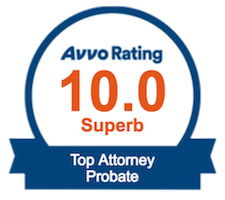Navigating Workplace Safety Concerns with Goldberg & Goldberg
Ensuring a Safe Work Environment: Your Rights and Actions to Take
At Goldberg & Goldberg, we understand the importance of a safe working environment and are committed to guiding you through your rights and the procedures to take when faced with hazardous conditions in your workplace.
The federal Occupational Safety and Health Act, commonly referred to as the OSH Act, along with parallel state legislations, provides a framework for employees to act in the face of workplace dangers. The response to an unsafe situation will hinge on the immediacy and severity of the potential harm.
Immediate Danger: Protecting Your Right to a Safe Work Space
If you believe that there is an immediate threat to your well-being due to a danger at your workplace, you have the right to avoid work conditions that could place you in peril. In this urgent scenario, make an immediate call to the U.S. Department of Labor’s Occupational Safety and Health Administration (OSHA) at their emergency contact number: 800-321-OSHA (6742). If you or a coworker are in need of immediate medical assistance, dial 911 without delay.
An imminent danger situation is characterized by the following:
- The belief that the work conditions pose an actual risk of death or severe physical harm.
- An employer who has been made aware of the issue but neglects to address it.
- A lack of sufficient time to eradicate the threat using alternative methods, such as asking for an OSHA inspection.
Note that certain states extend the right to refuse work beyond life-threatening circumstances. To learn about the safety regulations in your area, reach out to the state labor department for guidance.
Non-Immediate Danger: Taking Smart Steps to Address the Risk
When the threat to health and safety isn’t pressing, start by notifying your employer of the issue, under the assumption that they aren’t yet aware and will address it once informed. To ensure a record of your initiative, we advise making the request in writing or documenting the date, the person contacted, and details of the conversation for your own records.
Should approaching your employer directly leave you uneasy, you have the option to forgo this step and instead file a complaint directly with OSHA or an equivalent state agency.
Should your employer choose to ignore your concerns or retaliate against your raised safety issues, your subsequent action should involve lodging a formal complaint with OSHA or your state’s corresponding agency. OSHA offers guidance on their website titled “How to File a Complaint with OSHA,” featuring forms that can be submitted online or by fax or mail. You can opt to disclose your identity or submit your complaint anonymously.
Federal and state laws are in place to protect you from any retaliatory actions by your employer for refusing to work under hazardous conditions, for raising concerns about health and safety violations, or for exercising your rights under these laws.
For a comprehensive overview of federal regulations, visit the official OSHA website at www.osha.gov. For state-specific details, please contact your local state labor department.
At Goldberg & Goldberg, your safety is our priority. For a Free Consultation regarding workplace safety concerns or your legal rights in these situations, please contact us at (301) 654-5757. We are here to make sure your voice is heard and your well-being is protected.




